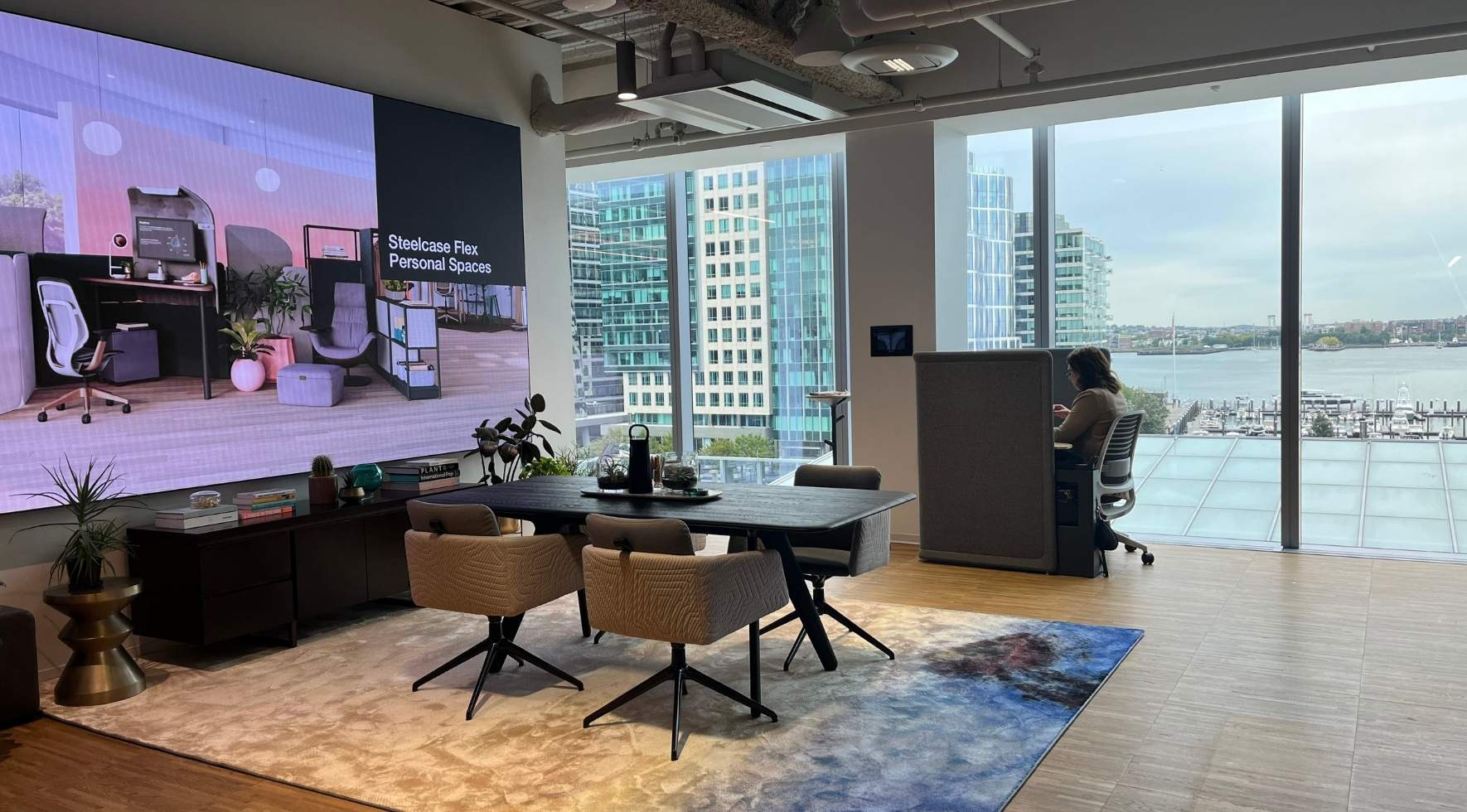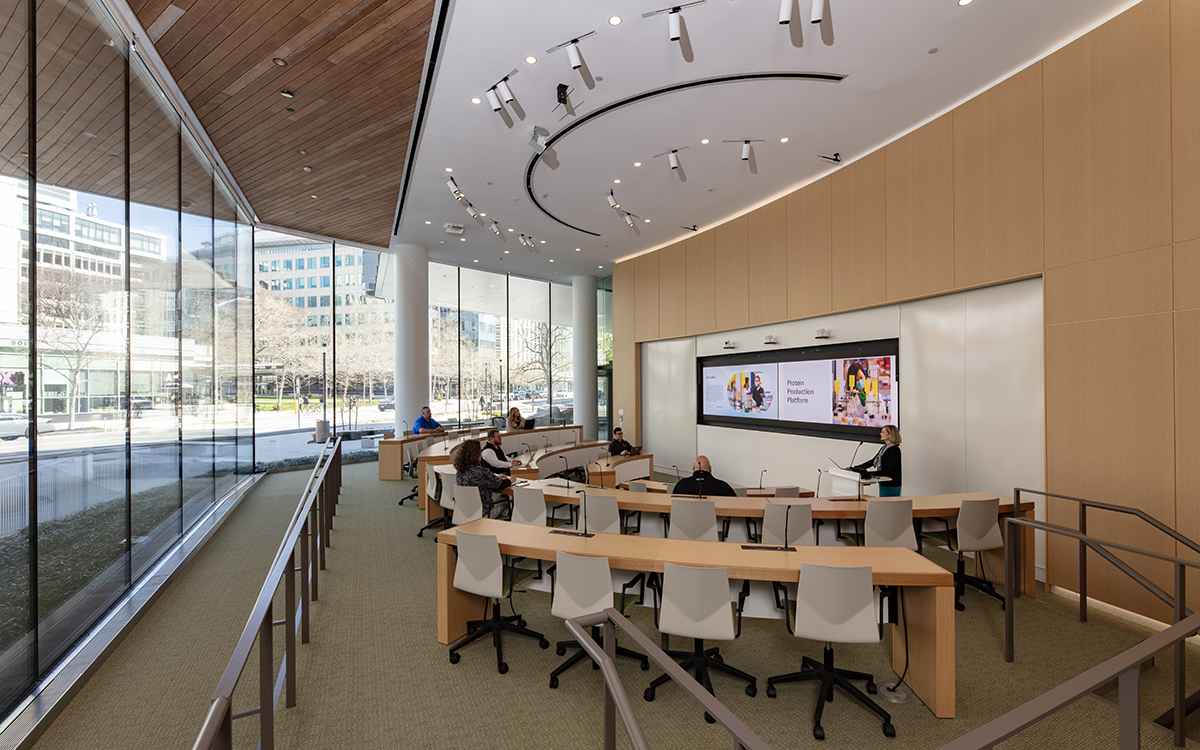The way we work has dramatically changed. More and more organizations are moving to a hybrid work model that’s continuously evolving based on the aspirations and needs of its people.
What is hybrid work?
Hybrid work is an agile process where people have the flexibility and autonomy to choose how, where, and when they work. To be effective, a hybrid workplace must be resilient, responding quickly and adapting easily to people’s preferences.
According to a study by Omnipresent, 94% of companies are planning to adopt hybrid workplace design for the long term. What’s causing this trend? 48% of the executives with current or planned hybrid working models say talent is driving their actions. Additionally, 35% cite employee wellbeing as another reason for moving to a hybrid work model.
Since people have more choice and control in a hybrid workspace, organizations need to work harder to not only earn people’s commute, but more importantly support the new ways they work.
What does a hybrid workplace look like?
When it comes to planning for a hybrid work model, Microsoft’s Hybrid Workplace Flexibility Guide is a great inspirational model created for their own employees. It starts by acknowledging its commitment to flexibility, including:
- Welcoming and enabling diverse ways of working
- Relying on new learning and mindset shifts
- Considering business needs and individual needs
- Building on trust and technology
From there, it dives into a diagram outlining the three core degrees of flexibility: work site, location, and hours:

According to Microsoft, all employees have a work site, a work location, and work hours; however, their hybrid workplace assumes a mix of workstyles across all three dimensions. Within each role, these three degrees of flexibility (site, location, hours) may differ.
How do you help employees decide?
Once you’ve decided a hybrid work model is best for your organization, how do you help employees understand the implications of their work site, work location, and work hour preferences?
Microsoft rolled out a set of considerations for employees to review, such as laws and regulations, guidelines, compensation and benefits, taxes, expenses, etc. to help set the groundwork:
Decision-making considerations for the hybrid model workplace
Before making any decisions, review these general considerations:
- Local laws and regulations: Your work location may be subject to specific laws or regulations related to approvals and documentation, equipment, or expenses. Visa-dependent employees may have additional considerations when changing location, reducing work hours, or compensation.
- Organization-specific guidelines: Each organization has org-specific guidelines and recommendations to ensure consistency and compliance within the different organizations.
- Degree of flexibility: With each role, work site, work location, and work hour flexibility may differ. Certain work is better suited to in-person or onsite while many types of work can be done equally well remotely.
- Compensation and benefits: A change to an employee’s primary work location and/or work hours may impact base pay, benefits, stock, bonus, and/or level.
- Expenses: Expenses related to work travel, including travel to team events, are considered business expenses, and come from a manager’s budget. Microsoft does not cover personal relocation costs or home office expenses (subject to legal requirements).
- Tax (corporate and personal): An employee’s work location can have personal tax implications for the individual as well as broader corporate tax considerations in the event of a cross border move. Employees are responsible for personal tax reporting and any costs incurred.
- Global mobility: When an employee moves to/works from another country, there are several important considerations including corporate tax, immigration, local law, and restrictions around work conducted in each country/region.
- Change process: Employees should initiate requests for changes to work site, work location, and work hours directly in Microsoft’s HR system.
It’s also helpful to coach them in how to decide what work they do in which location. While this may seem obvious, it’s generally not. Suggest criteria for when people should come in, and when they might work from home. Recommend that individuals be intentional about where they’re working for certain tasks and suggest teams have discussions about the points in their projects when it is best to be face-to-face, all-remote or hybrid.
What’s next?
Hybrid work will be most effective when people reflect on their own preferences, their work patterns and their team processes, so they can make planful decisions about where and when they’re working within the guidelines set by the organization.
Companies should experiment with new and unique workplaces, policies and practices; what worked for Microsoft may not work for every organization, but it could be a helpful starting point as we explore the meaning of hybrid working.






